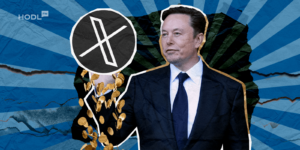A few moons back, Tesla unveiled “Optimus Gen 2,” the latest iteration of its humanoid robot, poised to take on repetitive tasks from humans.
Related: Apple M-Series Chips are Vulnerable to Crypto Hackers
This fresh prototype showcased a slew of enhancements compared to its previously unimpressive robot versions, instilling some degree of trust in a project that many scoffed at when it was first announced years ago with a dancer masquerading as a robot for dramatic effect.
Tesla believed it could pull this off by leveraging its advancements in artificial intelligence from its self-driving car program and its expertise in batteries and electric motors. The company argued that its vehicles were already robots on wheels. Now, all that’s left is to give them a humanoid form to replace humans in certain tasks—primarily repetitive and hazardous ones.
In the prior update about Optimus, Tesla’s CEO Elon Musk declared that “Optimus materials are extremely undervalued.” Musk even went on to say demand could reach between 10 to 20 billion units.
He went as far as to “confidently predict” that Optimus would account for “a significant portion of Tesla’s long-term value.”
Tesla Optimus Gen 2
Optimus, also known as the Tesla Bot, wasn’t taken seriously by many, except for the most hardcore Tesla fans, and there are some weighty reasons for that.
When it was first announced, it seemed like a half-baked idea from CEO Elon Musk, with a dancer disguised as a robot for showmanship. Even last year’s demonstration at the Tesla AI Day fell flat.
During that period, Tesla possessed a preliminary prototype that lacked significant impressiveness. It could barely walk and wave to the crowd. That was it.
Tesla asserts that with the latest iteration, the robot can now achieve a 30% increase in walking speed. Judging from the video, it’s not breaking any speed records soon, but it’s starting to become useful. The company also boasts a 10 kg weight reduction with improved balance.

One of the trickiest parts of creating a useful humanoid robot is the hands. They need to be strong enough to handle significant weight yet precise enough to deal with delicate objects.
The Optimal Price for Optimus
The CEO envisions every home having a Tesla robot named Optimus, taking on a slew of jobs in manufacturing and servicing.
For this to work, they’ve got to have a reasonable price. Musk previously claimed that, in his opinion, they could lower the price on their cars, which start at around $40,000.
Now Musk says that, in his view, Tesla could slash the price of its humanoid robot Optimus to “less than half a car.”
The average selling price of a Tesla car worldwide last year was just over $45,000, and the average selling price of a new car in the US is around $47,000. This means that Musk estimates the cost of the humanoid robot to be in the range of $20,000 to $25,000.
Tesla hasn’t set clear timelines for launching the robot into production, but in 2022, Musk stated that it could hit production as early as 2023, though that hasn’t happened yet.
More Info:
- Elon’s Bitcoin Rodeo: How to HODL Like a Billionaire
- Musk Implanted a Chip in a Human Brain and The Patient Survived!
Tesla’s Optimus Gen 2, despite initial skepticism, shows promising improvements over its predecessors, signaling progress in the realm of humanoid robotics.
Disclaimer: All materials on this site are for informational purposes only. None of the material should be interpreted as investment advice. Please note that despite the nature of much of the material created and hosted on this website, HODL.FM is not a financial reference resource and the opinions of authors and other contributors are their own and should not be taken as financial advice. If you require advice of this sort, HODL.FM strongly recommends contacting a qualified industry professional.



